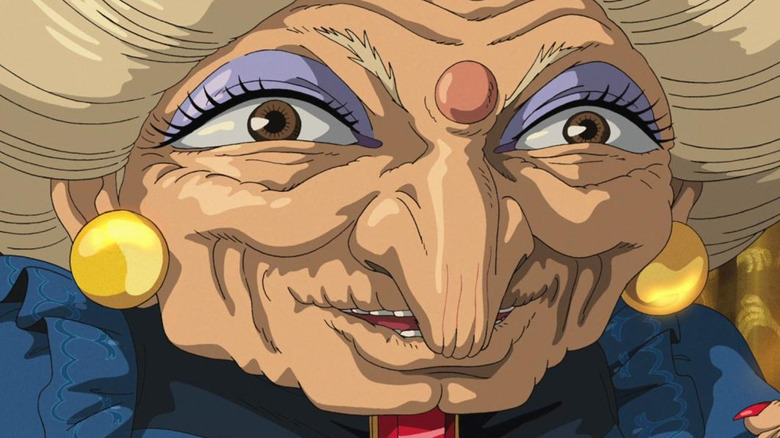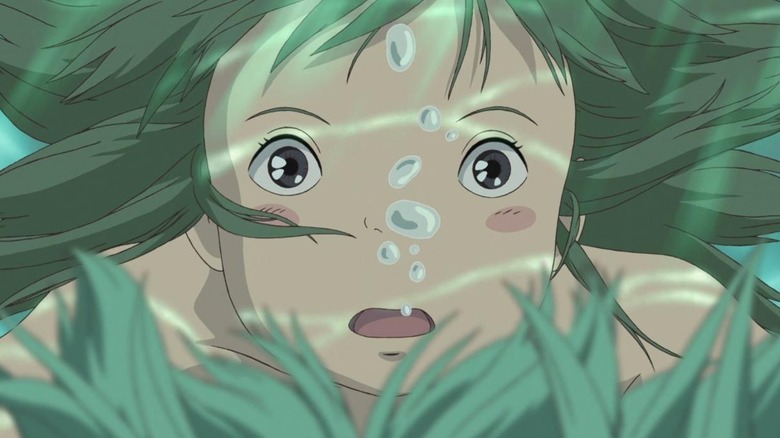Why Hayao Miyazaki Chose A Bathhouse As The Setting For Spirited Away
Studio Ghibli has been one of the world's most respected and admired animation studios for decades (via Polygon). With classics under their belt as revered as "Princess Mononoke," "Howl's Moving Castle," and "Kiki's Delivery Service," few animation studios are as critically lauded and beloved by their fanbase (via Rotten Tomatoes). Still, when it comes to the studio's output, one film regularly finds itself discussed among the absolute top of the heap: "Spirited Away." The masterpiece from Hayao Miyazaki wasn't just a critical success either, as "Spirited Away" also held the box office record for Japanese releases for nearly two decades (via Hollywood Insider).
The film follows young Chihiro (Rumi Hiiragi/Daveigh Chase) as she becomes separated from her parents and is whisked away into a world of adventure after wandering into what is believed to be an abandoned amusement park but is actually a bathhouse for those who reside in the spirit realm. While the tale ends up involving dragons, twin witches, and even a giant baby that's turned into a mouse, the bathhouse remains a crucial set piece throughout the film.
Of course, the film's quality and emotional impact are hard to argue, but some viewers may have more than a few questions after their first watch. For instance, audiences from outside Japan might wonder why Miyazaki set the story in a bathhouse of all places.
Bathhouses always struck Miyazaki as a place of mystery
Hayao Miyazaki was interviewed about "Spirited Away" just before the film was released in Japan, and via translation, the writer-director elaborated on the inspiration behind the film. Of particular note was Miyazaki's explanation for how he chose the setting of the movie and why he thought it was a place where the spirits of Japan might gather.
"For me, a bathhouse is a mysterious place in town. The first time I saw an oil painting was in a bathhouse," Miyazaki explained. "And there was a small door next to the bathtub. I wondered what was behind that door." When put this way, the inspiration sounds similar to how a young Shigeru Miyamoto imagined his famous "The Legend of Zelda" series from his childhood imagination while playing and exploring the hillsides of Japan (via NPR).
Miyazaki went on to elaborate on why he thought the fading gods of his homeland might choose that spot as a social hub as well. "It would be fun if there were such a bathhouse. It's the same as when we go to hot springs," the animation guru mused. "Japanese gods go there to rest for a few days, then return home saying they wished they could stay for a little while longer. I was thinking that it's tough being a Japanese god today," Miyazaki concluded.

